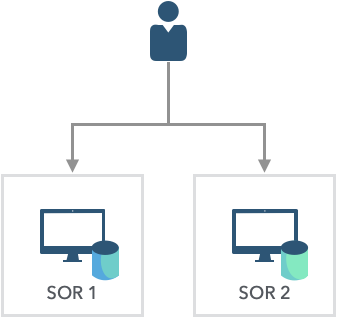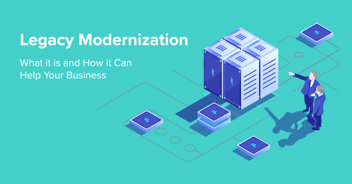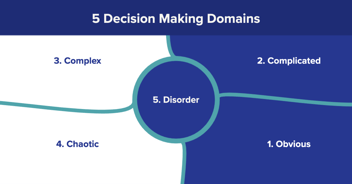Insights
Transforming Legacy Systems: A Strategic Guide to Industrial Modernization
Introduction:
The industrial sector is rapidly evolving, with digital efficiency becoming a critical driver of success. However, many organizations remain hindered by outdated legacy systems that limit their ability to compete and innovate. These outdated tools create significant operational bottlenecks, high maintenance costs, and compatibility issues with modern technologies. To remain competitive, industries must prioritize modernization efforts. This blog will explore the challenges posed by legacy systems and present strategies for updating technology stacks, improving Customer Relationship Management (CRM) integration, and reducing vendor dependency.
Drawing on insights from successful projects we have completed, as well as expert perspectives from sources like Forbes, Harvard Business Review, and Bain & Company, this blog offers actionable steps and case studies that demonstrate the importance of addressing legacy systems in industrial modernization.
Understanding the Challenges of Legacy Systems:
Legacy systems often form the backbone of industrial operations, supporting everything from supply chain management to production control. However, they also come with critical downsides:
- High Maintenance Costs: Outdated hardware and software require specialized support, which inflates operational expenses.
- Lack of Scalability: These systems were not designed to integrate with newer technologies, making it difficult to scale operations.
- Security Vulnerabilities: Older systems lack modern security features, making them vulnerable to cyberattacks.
- Operational Inefficiencies: Due to their age and limited integration capabilities, legacy systems can slow down operations, leading to lost time and revenue.
A report from McKinsey highlights that businesses relying on legacy systems can experience up to 20% higher operational costs due to inefficiencies. Furthermore, maintaining these systems can divert valuable resources from innovation and growth initiatives, as businesses must continuously allocate budget and personnel to keep them running. This reality necessitates a shift toward modernization. (You can also read the article how deprecated tech sinks the ROI for your new software)
Upgrading Outdated Tools: A Pathway to Modernization
To ensure industrial companies can compete in the current and future markets, addressing legacy systems must be a priority. The first step in this journey is upgrading outdated tools and technology stacks.
- Modernizing the Technology Stack
A common approach to modernization involves upgrading legacy systems to more modern, scalable solutions. This process often includes transitioning from on-premise solutions to cloud-based platforms, which provide greater flexibility and security. Cloud-based systems offer scalability, real-time data processing, and enhanced integration capabilities, allowing businesses to easily add new functionalities as operational needs evolve.
An energy company that partnered with Bain & Company demonstrated the effectiveness of this approach by shifting its legacy systems to a cloud-based infrastructure. This transition helped them reduce IT operating costs by 15-25% while increasing the speed of new product launches by 20-40%. Moreover, the company was able to improve its agility and operational flexibility, which allowed it to quickly scale digital services across business units. This example underscores how cloud adoption not only reduces technical debt but also enables continuous innovation and operational efficiency.
- Vendor Management: Reducing Third-Party Dependency
Another critical issue related to outdated tools is the over reliance on third-party vendors for system maintenance and upgrades. This dependency often leads to higher operational costs and slower response times when issues arise.
ChaiOne has successfully helped its clients to reduce their reliance on third-party vendors by developing in-house capabilities for managing and updating their digital tools. This strategy enabled our clients to improve response times for system fixes, cut costs related to third-party service contracts, and gain greater control over their IT infrastructure.
Improving CRM Integration for Seamless Operations
In the industrial sector, effective Customer Relationship Management (CRM) is essential for managing customer interactions and streamlining operations. However, many legacy systems lack the ability to integrate seamlessly with modern CRM platforms, resulting in data silos and inefficiencies.
- Enhanced CRM Integration
Integrating CRM systems with other operational platforms—such as Enterprise Resource Planning (ERP) systems—can help businesses streamline customer data and improve workflow efficiency. This integration enables real-time data synchronization across departments, allowing sales, support, and operations teams to collaborate more effectively.
In a recent blog by Harvard Business Review and Salesforce, it was noted that nearly 80% of companies struggle with system and data integration when trying to improve customer experiences. Disconnected systems and siloed data often prevent organizations from fully utilizing customer information, leading to inefficiencies. Moreover, only 15% of companies rate their performance as highly effective in delivering customer experience initiatives. This statistic emphasizes the critical need for integrated technology solutions to enhance customer experience, which is where CRM modernization plays a crucial role in transforming operations.
- Developing Custom Program Builders
Another method for overcoming inefficiencies in legacy systems is through the development of customized program builders. These tools can replace outdated manual processes with tailored digital solutions, allowing businesses to adapt their systems to meet the unique needs of their operations.
In one of our projects, we worked with an industrial company to develop a custom CRM integration that automated several key processes, including order tracking and customer support workflows. This solution not only reduced manual work but also improved customer response times, resulting in higher customer satisfaction and streamlined operations.
Case Studies: Proven Strategies for Legacy System Modernization
To further illustrate the benefits of modernizing legacy systems, We provide three examples from recent projects where ChaiOne successfully helped clients transition to more modern technology platforms in different parts of the value chain. Due to agreements with these organizations, we cannot mention the specific companies involved.
Case Study 1: Modernizing Construction Operations
A $200+ million revenue construction company in the US faced significant financial losses due to inefficient, paper-heavy processes. The company was losing at least $2 million annually and struggling with siloed, outdated information about field operations. This lack of real-time data limited their ability to respond to emerging needs and risks.
To address these challenges, ChaiOne developed custom digital tools designed for key users. These tools provided actionable, real-time data that significantly improved operational efficiency. Key improvements included:
- Visibility into project status: Managers gained access to real-time data on project costs and earnings.
- Manpower planning: Insights into current and future manpower needs helped optimize recruiting efforts.
- Material tracking: Real-time updates on materials used and needed streamlined ordering and delivery processes.
By modernizing their operations, the construction company enhanced decision-making, increased operational efficiency, and eliminated costly delays.
Case Study 2: Streamlining Inventory Management for a Fortune Global 15 Company
A global Oil and Gas company was incurring significant costs maintaining inventory across multiple third-party locations. The company lacked full visibility into their inventory, making it difficult to track ownership, availability, and disposal status. The highly manual process of reviewing, approving, and disposing of inventory further contributed to inefficiencies, delays, and increased costs.
To address these challenges, ChaiOne implemented a custom inventory management solution. This solution provided a centralized, real-time view of inventory, enabling better oversight and control. As a result, the company significantly improved its inventory management processes. Key outcomes included:
- Reduced approval times: The timeline for inventory disposition approvals was shortened from over 30 days to just 3 days.
- Improved visibility: The company gained clear insights into what inventory was on hand, who owned it, and what could be disposed of.
- Operational efficiency: The solution minimized manual work, reducing the time and effort required to manage inventory across multiple locations.
Case Study 3: Enhancing Customer Acquisition for an electricity Company
A energy company (Fortune 500) partnered with ChaiOne to redesign the user interface for their Acquisitions Customer Care Associates, aiming to streamline how they handle prospective customer calls. The goal was to create an intuitive, easy-to-use system that would match customers with the best plans and offers based on their account configuration.
This new interface produced significant results including:
- Increased conversion: Enrollment Gate Conversion rose by 5% across the company's three major brands.
- Revenue impact: The improvements led to a total impact of $16 million, driven by reduced employee turnover and increased sales.
This case illustrates how a user-centered approach to digital transformation can drive measurable business outcomes in customer acquisition and retention.
Conclusion: Moving Toward Modernization
Addressing legacy systems is not just an IT initiative—it is a strategic move that enables businesses to improve efficiency, reduce operational costs, and better serve their customers. Whether through upgrading technology stacks, enhancing CRM integration, or reducing vendor dependency, companies that prioritize modernization will be better positioned to compete in the future.
Our expertise in digital transformation and modernization projects has provided measurable value to our clients in the industrial sector. By leveraging our experience, businesses can confidently take the first steps toward modernizing their legacy systems and securing long-term success.
.png?width=1040&height=600&name=transforming%20legacy%20systems%20blog%20main%20(1).png)


